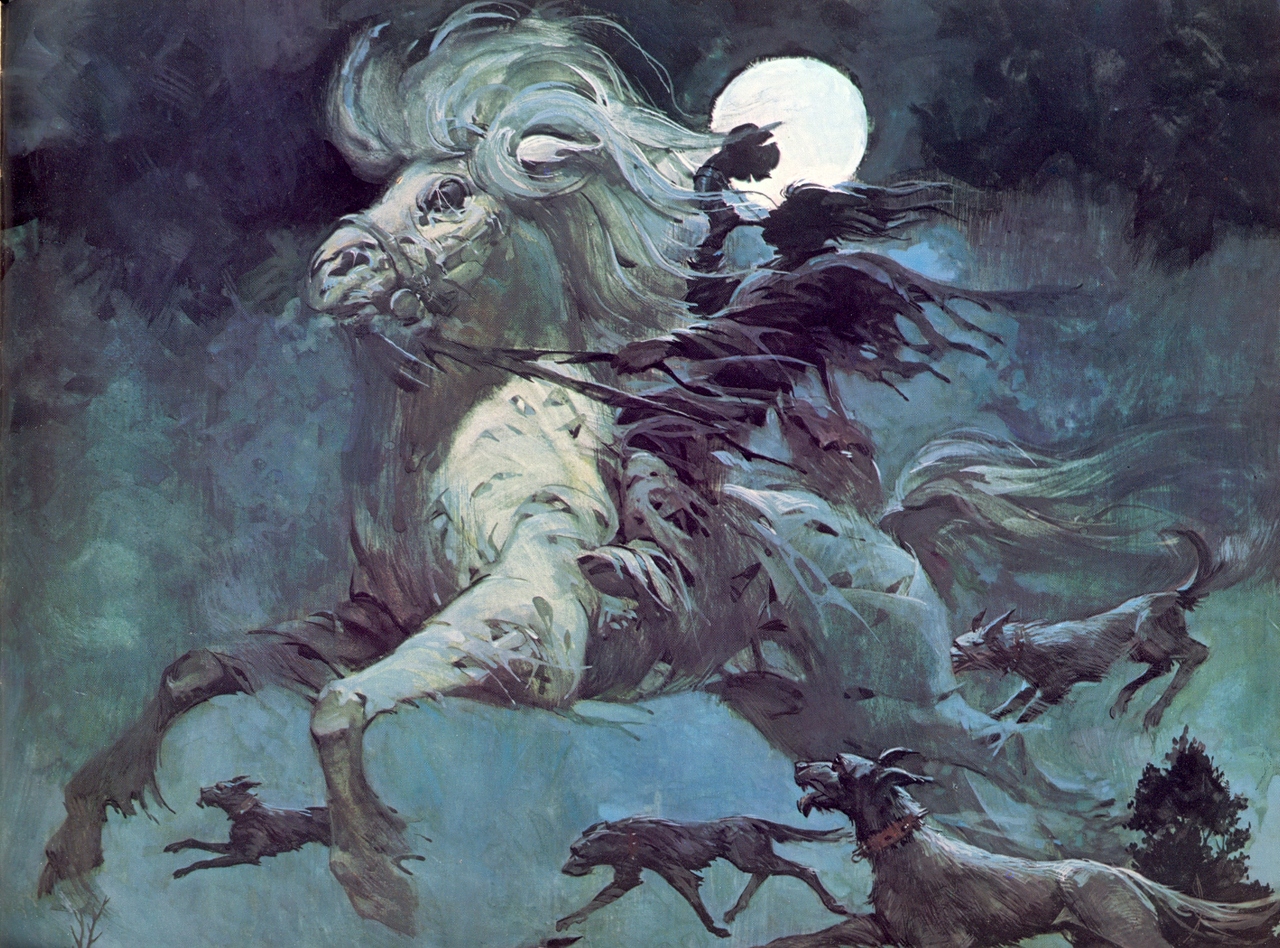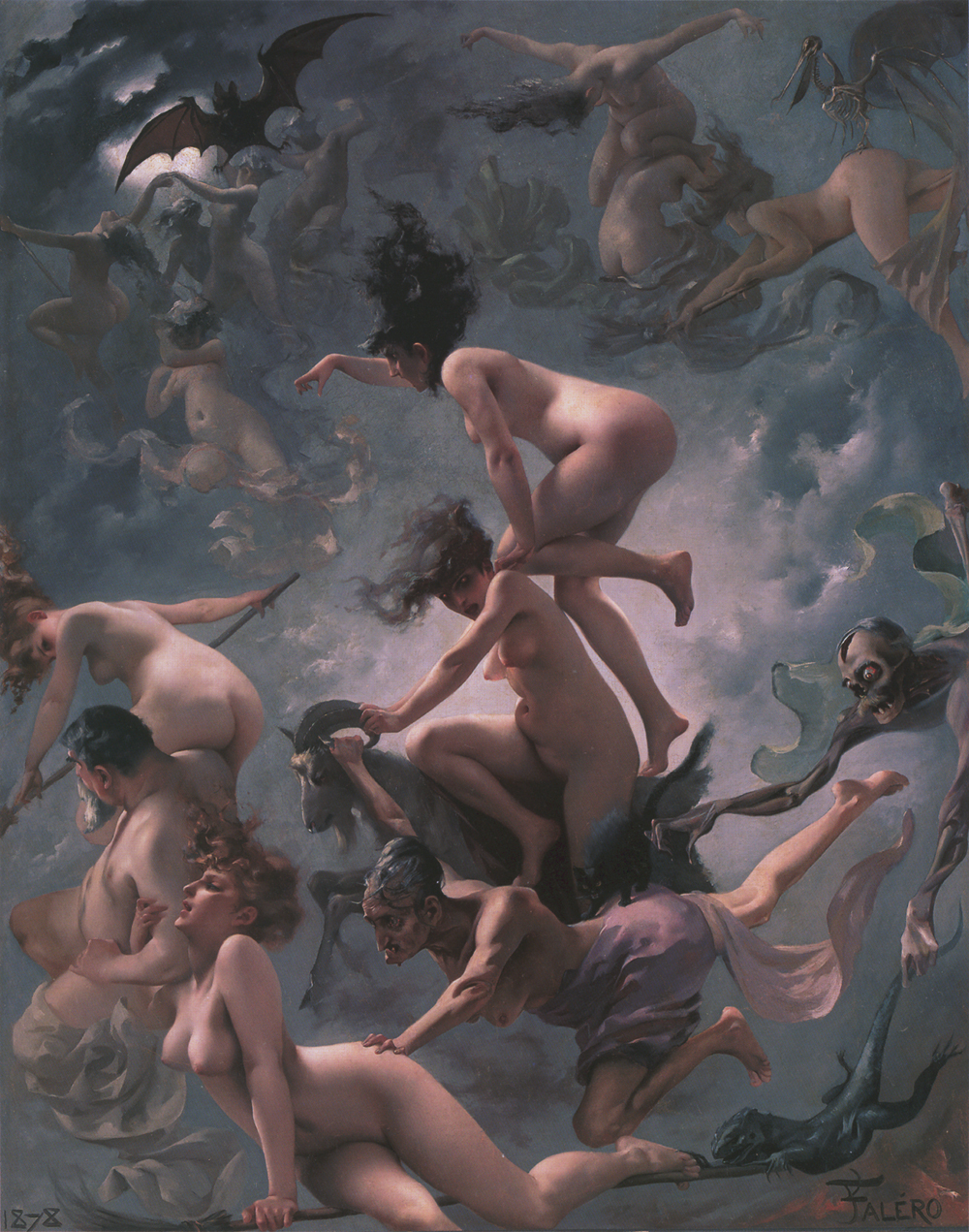Tag: Santa Claus
Towards “TimeWave Zero”: Psychedelia and Eschatology in Terence McKenna
In addition to being one of the "prophets" of the psychedelic Counterculture of the second half of the last century, Terence McKenna was able to build, in the course of thirty years of studies and experiments, a real eschatological system for the Third Millennium, in view of final explosion, based on the recovery of shamanic practices, on a new interpretation of the Sacred as "Mysterium Tremendum" and on the vision, beyond the ordinary dichotomy between life and death, of what he called an "Ecology of Souls".
The "Ghost Riders", the "Chasse-Galerie" and the myth of the Wild Hunt
(image: Henri Lievens, "Wild Hunt")
«Un old cowboy went out on horseback on a dreary windy day / rested on a ridge as he went for his road». Thus begins one of the most beautiful and famous country songs of all time: (Ghost) Riders in the Sky: A Cowboy Legend.
The archaic substratum of the end of year celebrations: the traditional significance of the 12 days between Christmas and the Epiphany
di Marco Maculotti
article originally published on Atrium on 21/12/2016,
here revised and expanded
Here we aim to deepen the folkloric beliefs that have led to the configuration of two figures intimately connected to the liturgical-profane calendar of Europe in recent centuries. The two figures that interest us are those of Santa Claus (Italianized in Santa Claus) and of the Befana, figures that - as we will see - owe their origin and their symbolism to an archaic substratum, anthropologically recognizable in all those practices and beliefs (myths and rites) of the volk European (or rather eurasian), which elsewhere we have defined as "cosmic-agrarian cults" [cf. Cosmic-agrarian cults of ancient Eurasia].
The Friulian benandanti and the ancient European fertility cults
di Marco Maculotti
cover: Luis Ricardo Falero, “Witches going to their Sabbath", 1878).
Carlo Ginzburg (born 1939), a renowned scholar of religious folklore and medieval popular beliefs, published in 1966 as his first work The Benandanti, a research on the Friulian peasant society of the sixteenth century. The author, thanks to a remarkable work on a conspicuous documentary material relating to the trials of the courts of the Inquisition, reconstructed the complex system of beliefs widespread up to a relatively recent era in the peasant world of northern Italy and other countries, of Germanic area, Central Europe.
According to Ginzburg, the beliefs concerning the company of the benandanti and their ritual battles against witches and sorcerers on the Thursday nights of the four tempora (Her hand, imbol, Beltain, Lughnasad), were to be interpreted as a natural evolution, which took place far from the city centers and from the influence of the various Christian Churches, of an ancient agrarian cult with shamanic characteristics, widespread throughout Europe since the Archaic age, before the spread of the Jewish religion - Christian. Ginzburg's analysis of the interpretation proposed at the time by the inquisitors is also of considerable interest, who, often displaced by what they heard during interrogation by the benandanti defendants, mostly limited themselves to equating the complex experience of the latter with the nefarious practices of witchcraft. Although with the passing of the centuries the tales of the benandanti became more and more similar to those concerning the witchcraft sabbath, the author noted that this concordance was not absolute:
"If, in fact, the witches and sorcerers who meet on Thursday night to give themselves to" jumps "," fun "," weddings "and banquets, immediately evoke the image of the sabb - that sabb that the demonologists had meticulously described and codified, and the inquisitors persecuted at least since the mid-400th century - nonetheless exist, among the gatherings described by benandanti and the traditional, vulgate image of the diabolical sabbath, evident differences. In these cEverywhere, apparently, homage is not paid to the devil (in whose presence, indeed, there is no mention of it), faith is not abjured, the cross is not trampled, there is no reproach of the sacraments. At the center of them is a dark ritual: witches and sorcerers armed with sorghum reeds who juggle and fight with benandanti provided with fennel branches. Who are these benandanti? On the one hand, they claim to oppose witches and sorcerers, to hinder their evil designs, to heal the victims of their hexes; on the other hand, not unlike their presumed adversaries, they claim to go to mysterious nocturnal gatherings, of which they cannot speak under pain of being beaten, riding hares, cats and other animals. "
—Carlo Ginzburg, "I benandanti. Witchcraft and agrarian cults between the sixteenth and seventeenth centuries», Pp. 7-8





